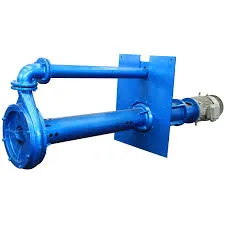hawaiian
- Afrikaans
- Albanian
- Amharic
- Arabic
- Armenian
- Azerbaijani
- Basque
- Belarusian
- Bengali
- Bosnian
- Bulgarian
- Catalan
- Cebuano
- Corsican
- Croatian
- Czech
- Danish
- Dutch
- English
- Esperanto
- Estonian
- Finnish
- French
- Frisian
- Galician
- Georgian
- German
- Greek
- Gujarati
- Haitian Creole
- hausa
- hawaiian
- Hebrew
- Hindi
- Miao
- Hungarian
- Icelandic
- igbo
- Indonesian
- irish
- Italian
- Japanese
- Javanese
- Kannada
- kazakh
- Khmer
- Rwandese
- Korean
- Kurdish
- Kyrgyz
- Lao
- Latin
- Latvian
- Lithuanian
- Luxembourgish
- Macedonian
- Malgashi
- Malay
- Malayalam
- Maltese
- Maori
- Marathi
- Mongolian
- Myanmar
- Nepali
- Norwegian
- Norwegian
- Occitan
- Pashto
- Persian
- Polish
- Portuguese
- Punjabi
- Romanian
- Russian
- Samoan
- Scottish Gaelic
- Serbian
- Sesotho
- Shona
- Sindhi
- Sinhala
- Slovak
- Slovenian
- Somali
- Spanish
- Sundanese
- Swahili
- Swedish
- Tagalog
- Tajik
- Tamil
- Tatar
- Telugu
- Thai
- Turkish
- Turkmen
- Ukrainian
- Urdu
- Uighur
- Uzbek
- Vietnamese
- Welsh
- Bantu
- Yiddish
- Yoruba
- Zulu
Telephone: +86 13120555503
Email: frank@cypump.com
Dec . 22, 2024 07:51 Back to list
pipeline pumping
Understanding Pipeline Pumping A Vital Process in Transportation and Industry
Pipeline pumping is a critical operation within various sectors, particularly in the transportation of liquids and gases across extensive distances. This process is essential for industries such as oil and gas, water supply, and even in the food and beverage sector. Understanding the intricacies of pipeline pumping is crucial, as it ensures efficiency, safety, and environmental sustainability in the movement of fluids.
At its core, pipeline pumping involves the use of pumps to move fluids through pipelines. This can include crude oil, refined products, natural gas, water, or chemicals, depending on the industry’s requirements. The operation begins with the selection of appropriate pumps, which are designed to overcome friction losses and elevation changes as the fluid travels through the pipeline. Special attention is given to the pump’s capacity, efficiency, and compatibility with the fluid being transported.
One of the primary advantages of pipeline pumping is its efficiency. Compared to transportation methods like trucking or rail, pipelines represent the most cost-effective means of moving large volumes of fluids over long distances. This advantage translates into lower energy consumption and reduced operational costs, which is why many industries prefer pipelines for fluid transport.
However, several challenges accompany pipeline pumping. One major concern is the risk of leaks and spills. Given that pipelines can extend for thousands of miles, any breach in integrity can lead to significant environmental damage and financial losses. To mitigate these risks, strict monitoring systems are employed. Modern technology allows operators to utilize real-time monitoring tools, including pressure sensors and smart pigging systems, which can detect anomalies and assess pipeline integrity.
pipeline pumping

Environmental regulations also play a crucial role in shaping pipeline pumping operations. Companies are required to adhere to specific standards aimed at minimizing environmental impacts. This often involves conducting thorough environmental assessments before commencing construction on new pipeline projects. Furthermore, operators are increasingly adopting green technologies, such as solar-powered pumping stations, to reduce their carbon footprint and increase sustainability.
Safety is another paramount aspect of pipeline pumping that cannot be overlooked. The transportation of hazardous materials, like crude oil or natural gas, demands stringent safety protocols. Regular training sessions for staff, emergency response drills, and routine maintenance checks contribute to a safer operational environment. Moreover, advancements in technology have improved safety monitoring, enabling early detection of leaks or equipment failures.
The economic implications of pipeline pumping extend beyond the immediate transportation of goods. The development of pipeline infrastructure often brings significant investments into communities, creating jobs and stimulating local economies. Pipelines also facilitate trade by ensuring a reliable supply of essential resources, which is crucial for both national and global markets.
In conclusion, pipeline pumping is an essential and complex process that plays a pivotal role in numerous industries. As demand for efficient, safe, and environmentally friendly transport solutions continues to grow, so too does the importance of advancing pipeline technology and infrastructure. By ensuring the integrity and efficiency of pipeline systems, industries can contribute positively to economic growth while minimizing their environmental impact. As we move forward, embracing innovative solutions and adhering to stringent safety measures will be vital in maintaining the balance between industrial growth and environmental stewardship. Understanding the dynamics of pipeline pumping is not just a matter of operational efficiency; it’s about fostering a sustainable future in fluid transportation.
-
ISG Series Vertical Pipeline Pump - Chi Yuan Pumps Co., LTD.|High Efficiency, Energy Saving, Low Noise
NewsJul.30,2025
-
ISG Series Vertical Pipeline Pump- Chi Yuan Pumps|High Efficiency&Low Noise
NewsJul.30,2025
-
ISG Series Vertical Pipeline Pump-Chi Yuan Pumps Co., LTD.|High Efficiency&Energy Conservation
NewsJul.30,2025
-
ISG Series Vertical Pipeline Pump - Chi Yuan Pumps Co., LTD.|Advanced Hydraulic Design&Energy-Efficient Solutions
NewsJul.30,2025
-
ISG Series Vertical Pipeline Pump - Chi Yuan Pumps Co., LTD.
NewsJul.30,2025
-
ISG Series Vertical Pipeline Pump - Chi Yuan Pumps Co., LTD.|energy-efficient fluid handling&industrial durability
NewsJul.30,2025










